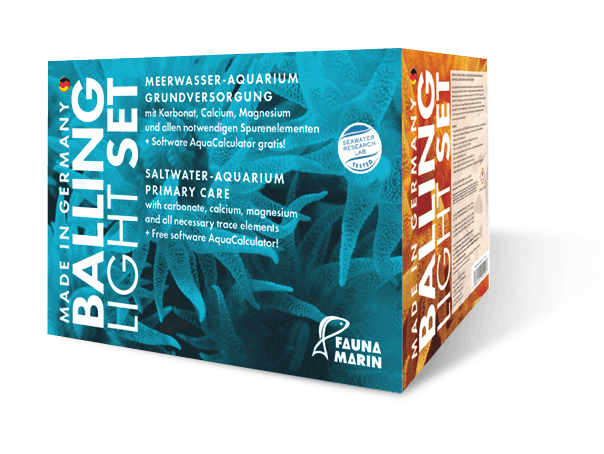Chloride
The chloride content of seawater is determined either by ICP or by ion chromatography (IC). We use highly accurate IC measurements for the analyses, as we determine chloride in a separate measuring procedure.
The chloride content is often associated with the theory of ion shift.
What’s this:
Chloride is part of the common salt in our sea salt mix. Together with the element sodium it forms the sodium chloride. Chlorides, i.e. the salts of hydrochloric acid, form many other compounds, and so they are also found in combination with calcium (calcium chloride), magnesium (magnesium chloride) and many others.
Problems:
Too high and too low salt quantities cause problems for all aquarium inhabitants. Poor growth, loss of color, no polyp or tissue expansion are the initial signs. The salt content should always be set in the range of 33–35 ppt.
Measures:
Regularly check the salt quantity, replace evaporated water with reverse osmosis water (RO water), refill with sea salt to compensate for losses due to discharge.
Indicator species:
With increased salt quantities, leather corals, acroporids and gorgonians quickly show reduced polyp expansion, loss of colour and contraction of the tissue. With decreasing values the same reactions take place.
Value too high:
Observe salinity and compensate by correct salinity.
Value too low:
Pay attention to salinity and compensate for it with the correct salinity.
| Variety | Halogen |
|---|---|
| Benefit | Metabolism, basic element sea salt |
| Reference value | 19.500 mg/l (0,26 US.liq.gal.) |
| Skill Level | green |
| Source | salt, supply systems trace element mixtures, animal feed |
| Available | no separate source |
| Importance 1–6 | 5 |
| Detection quality | safe |
| Relation values | sodium, salinity line |

Balling Light:
No special measures! Compensation via salinity.
Even though the following hypothesis has been disproved by now, it remains persistently. It says: Due to the constant addition of salts (calcium, magnesium, carbonates), the ion spectrum of seawater shifts in the long run. This is to be compensated by adding sulphates and mineral salts. In theory, this is certainly correct, but in practice it is not, because these ion shifts do not build up as a result of other additions such as feed or water care products and new modern sea salt mixtures. A regular partial water change compensates for such differences very well and is therefore recommended by us.
It must also be taken into consideration that our aquaria do not contain natural seawater but an artificial seawater mix, which in direct comparison to natural seawater contains too high or too low concentrations of many elements. In aquarium water, ion shifts may well develop, but these are more likely to be due to a mismatch between different nutrients and elements, caused by inappropriate dosing of individual elements and/or lack of partial water changes.
The chloride value itself as given with sodium is not significant. Here, the salinity measurement is the useful basis for correct adjustment.
Tip:
As the salt content is a really important measurement value, we advise you to purchase high quality measuring instruments. The addition of salts or salt containing solutions, as they are offered in the market as supply systems, always increases the salinity. We therefore recommend that you always carry out regular partial water changes to compensate for the increasing salt content.